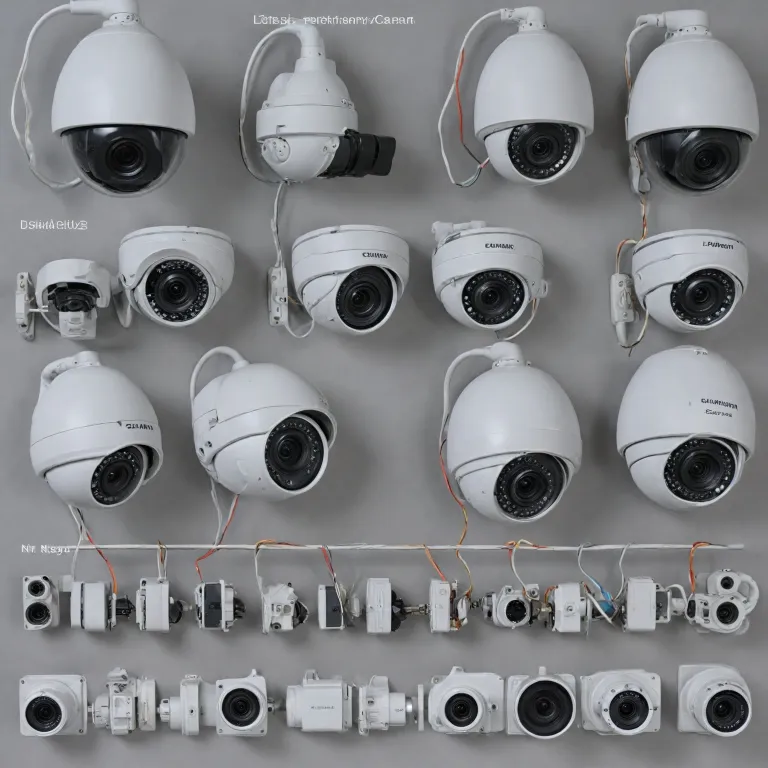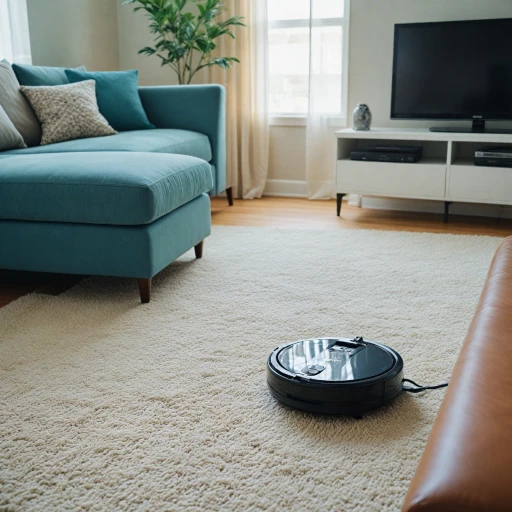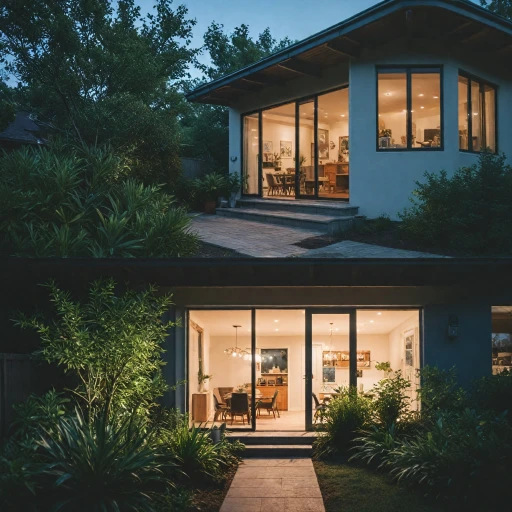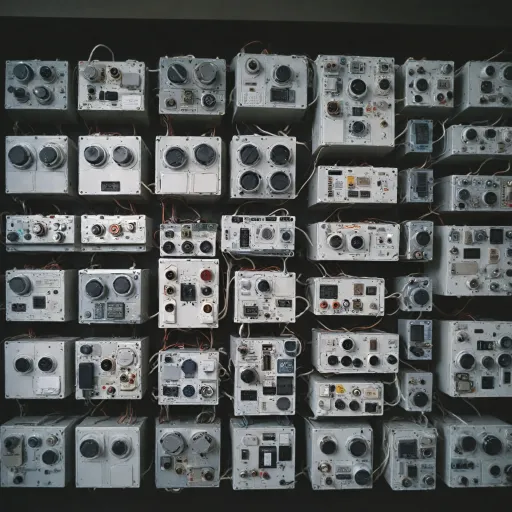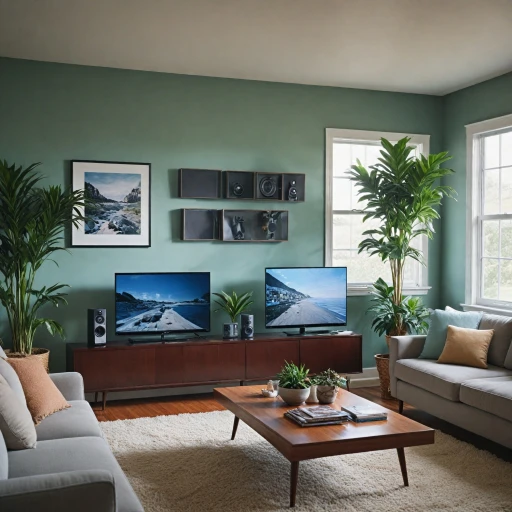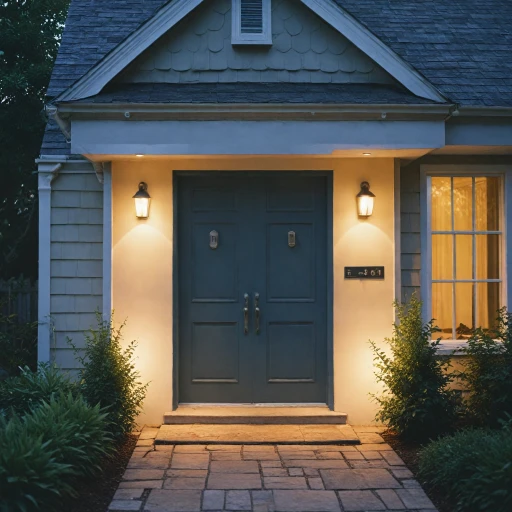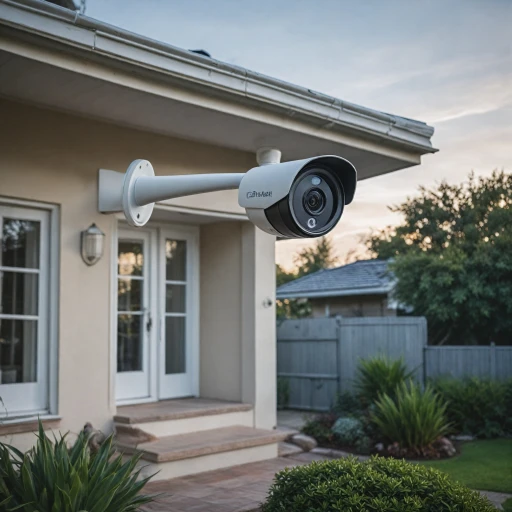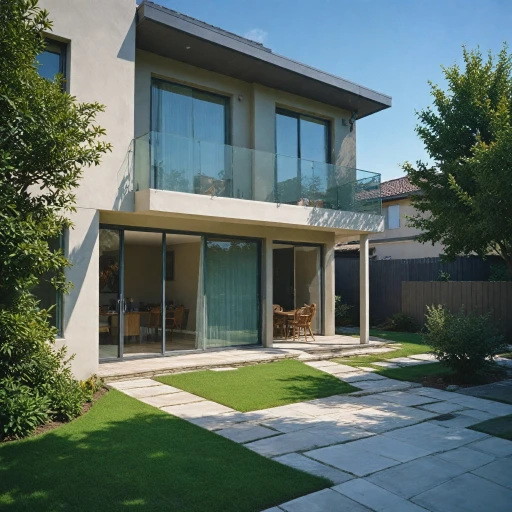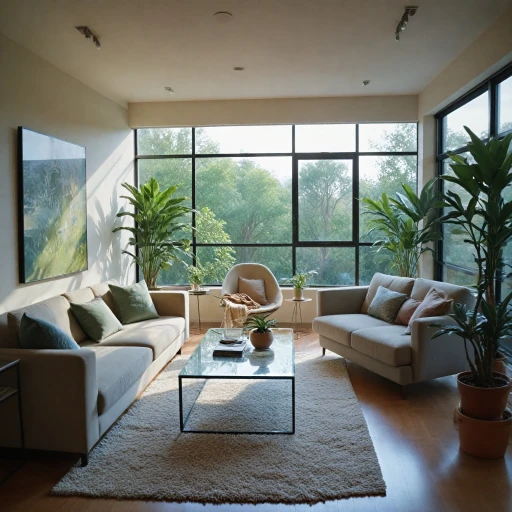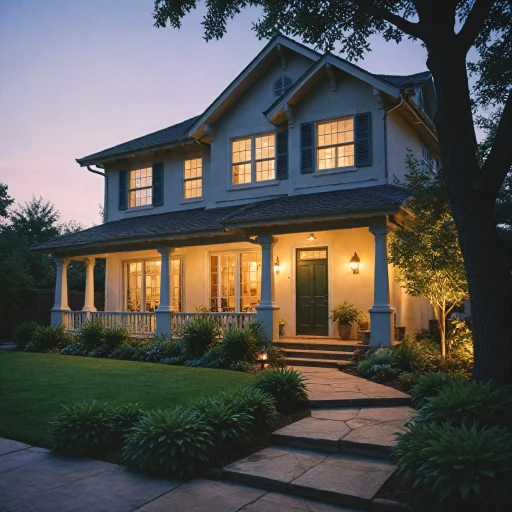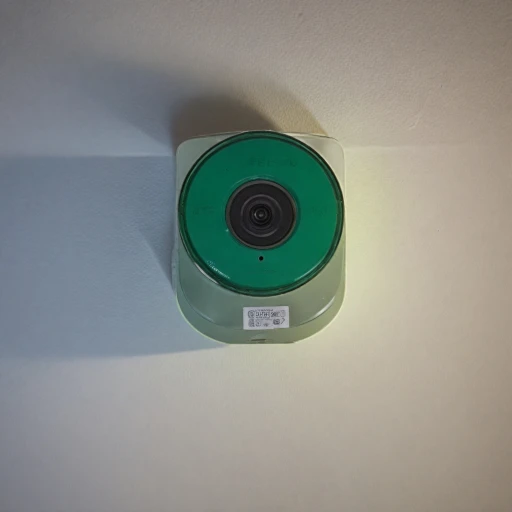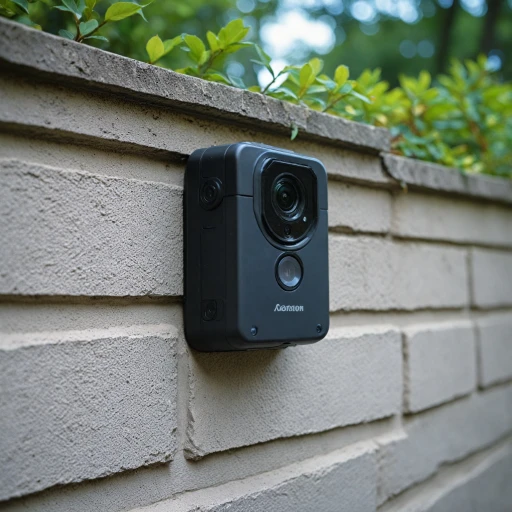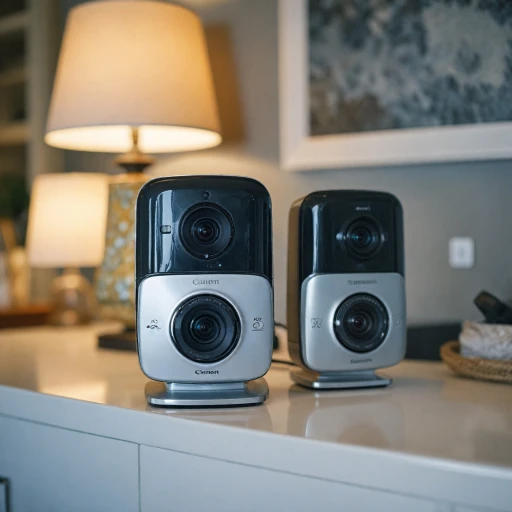
The Importance of Wiring in Security Cameras
The Vital Role of Wiring in Security Systems
When it comes to installing security cameras in your home, understanding the importance of proper wiring is crucial. A reliable wiring setup is essential for efficient video transmission, power supply, and seamless operation of the entire security system. Whether you're dealing with a cctv camera system, analog cameras, or a digital network of video equipment, the right wiring can significantly affect performance and reliability.
Proper wiring not only ensures that the security cameras operate effectively but also maintains the quality of the video and audio captured, important for surveillance scrutiny. Different types of cables, such as coaxial cable, siamese cable, and cat network cable, serve various functions like transmitting video, power, and networking data.
Inadequate or poor-quality wiring could lead to a range of issues, from loss of video quality to power failures or interruptions in network connectivity. For instance, the use of siamese cables, which combine video and power cables, can streamline installation and reduce the number of separate cables running through your setup, offering a neat and efficient solution.
Furthermore, using the right connectors and ensuring they are securely attached is vital. In many cases, camera cables come in specific colors such as cable white or cable black to differentiate between functions. It's all about striking the right balance for efficient data and power transmission. For those dealing with analog systems, using an RCA to coaxial cable adapter can be key to enhancing compatibility and function.
Investing time and resources into selecting and installing the correct wiring is not just about ensuring a clearer picture; it's also about guaranteeing the longevity and effectiveness of your entire security camera system. By understanding the importance of wiring and regularly maintaining it, you can ensure your security system remains robust and dependable.
Types of Wiring for Security Cameras
Exploring Wiring Options for Optimal Video Transmission
When setting up a security system, choosing the right type of wiring is crucial for seamless video transmission and the efficient functioning of security cameras. Various camera wiring options exist to meet diverse needs, and it's important to understand their unique characteristics.
Coaxial Cables: Often preferred for analog and CCTV camera setups, coaxial cables, such as the cable black and cable white, are popular for their durability and capacity to handle video and audio signals. They require connectors like the BNC adapters for secure connections.
Siamese Cables: The siamese configuration offers a convenient solution by combining video and power cables. These siamese cables support coaxial video power transmission alongside power delivery through a single cable setup, reducing installation complexity.
Network Cables: As technology advances, network cable options have gained traction, especially with IP security systems. Utilizing cat network cables, they support high-definition video transmission over long distances and allow seamless integration into broader computer networks.
To grasp the nuances of transitioning from BNC to RCA plug in home security cameras, one can delve into more detailed insights which guide through adapter usage and the importance of ensuring _cables connectors_ compatibility.
Each type of wiring solution caters to different security camera models and installation environments, highlighting the importance of understanding these intricacies to achieve an efficient and secure setup.
Choosing the Right Wiring for Your Home
Picking the Ideal Wiring Setup for Your Security System
When considering the ideal setup for your security cameras, the choice of wiring can significantly impact the efficiency and reliability of your security system. To make an informed decision, it's important to weigh the pros and cons of various options, including coaxial cables, Cat cables, and siamese cables.
Coaxial cables are prevalent in analog CCTV systems thanks to their robust video transmission capabilities. They are simple to install and often paired with a power cable that combines video and power in one sheath. This combination, known as siamese video and power cables, streamlines camera wiring and ensures a neat installation.
For those opting for a digital setup, Cat cables, such as Cat5 or Cat6, might be more suitable. These cables offer a comprehensive solution by providing both video and audio transmission, as well as data connection for network cameras. Their versatility makes them an excellent choice for most smart home systems. Cat network cables not only support high-definition video but also facilitate the connection of multiple cameras into one security system.
The choice between black or white cables can also play a functional role, beyond aesthetics. Darker colored cables can blend into surroundings more inconspicuously compared to lighter ones, which might be more appropriate for high visibility areas.
Another factor to consider is the connectors used with your camera cables. Cable connectors play a critical role in ensuring secure connections between your cameras and video recording equipment. Common types include BNC connectors for coaxial cable and RJ45 for network cable connections.
With the considerations above, make sure to choose wiring that aligns with your safety goals, technological compatibility, and budget needs. For added security measures, you might explore solutions like alarm lock systems which can complement your hard-wired setup. Selecting the right camera cables not only enhances video quality but also ensures a hassle-free, long-lasting security system.
Installation Tips for Security Camera Wiring
Installation Best Practices for Effective Camera Wiring
Setting up a security camera system is a meticulous process that requires careful attention to the details of camera wiring. By taking the time to properly install camera cables, you can ensure that your security system functions smoothly and efficiently. Here are some essential installation tips:
- Plan Your Wiring Path: Before you begin, map out the route for your cables. Whether you're using coaxial cables, siamese cables, or cat network cables, a planned route minimizes clutter and maximizes efficiency. This step is crucial for both analog and IP cameras.
- Consider the Environment: Cables will often run through different environments, which can impact their longevity and performance. For cables running outdoors, ensure they are weatherproof and correctly shielded to avoid potential damage. Siamese and coaxial cables often come in robust versions suitable for outdoor use.
- Secure Your Cables: Use cable clips or conduit to fix your cables in place. This not only prevents accidental disconnections but also ensures a neat and organized layout. Opt for cable colors that match your property's aesthetics, such as white or black, to keep the installation visually discreet.
- Mind Power and Transmission Needs: For those using siamese video power cables, make sure to connect the power cable correctly to ensure that your CCTV cameras receive consistent power. This will support uninterrupted video transmission and recording.
- Check Connector Compatibility: Ensure that the cables connectors are compatible with your cameras' ports. Common options include BNC and video audio connectors, and it's vital to understand the specific connectors required by your system.
By following these tips, your security camera installation will be on its way to optimal performance. Efficient installation not only boosts system reliability but also enhances overall security coverage, offering peace of mind.
Maintaining and Troubleshooting Security Camera Wiring
Regular Maintenance and Diagnostics for Optimal Performance
Keeping your security camera system in optimal working condition is crucial for ensuring consistent surveillance coverage. To avoid disruptions, consider these maintenance and troubleshooting tips:- Regular Inspection: Check the condition of all cables and connectors. Look for wear and tear, such as frayed siamese cables and loose connectors, which can affect video and power transmission.
- Cleaning Connectors: Dust and moisture can accumulate over time at connection points. Gently clean connectors like the coaxial cable BNC and power connectors to ensure a clean signal and consistent power supply.
- Tightening Connections: Ensure all camera cables, including coaxial, network cable, and video power cables, are securely connected. Loose connections can lead to video lag or complete loss of signal.
- Checking Cable Integrity: Regularly inspect your cat network cables for any damage or deterioration. Replacing damaged cables black or cable white promptly can prevent further system issues.
- Power Supply Check: Verify that your power cables are properly connected and not damaged. An inadequate power supply can interrupt the operation of your CCTV cameras.
- Software Updates: Keep your security system’s firmware up to date to ensure compatibility and incorporate the latest features and security patches.
- Diagnostic Tools: Utilize any available diagnostic tools provided with your security system. These tools can help pinpoint issues related to video or audio transmission, helping you address them proactively.
Future Trends in Security Camera Wiring
Emerging Directions in Security Camera Wiring
As we look at the evolving landscape of security camera systems, the role of wiring cannot be overlooked. With advancements in technology, the reliance on traditional analog systems using coaxial cables is gradually shifting towards more versatile solutions. One such trend is the adoption of network cable solutions like the Cat network cables, offering better data transmission speeds and more stable video signal quality.
Security systems today are increasingly becoming wireless, but there's still a strong demand for wired systems due to their reliability and consistent power supply. Innovations in siamese cables, for instance, have enhanced the efficiency of video and power cable management by combining these elements into one. Similarly, new cable connectors are being developed to achieve better security and efficiency when linking cameras to recording devices.
Another area to watch is the color-coding of cables for easier identification and troubleshooting. The use of cable white or cable black as part of a comprehensive system ensures that misconnection is minimized and streamlines maintenance operations.
The integration of high-speed fiber optics remains a cutting-edge solution to deliver higher video quality over extended distances, a feature often limited in traditional cctv camera installations. Moreover, innovations in cable cat systems are facilitating more efficient cabling solutions, reducing bulk and improving the aesthetic of home security installations.
As security camera technologies continue to evolve, replacing outdated network cable systems with modern, robust options is crucial for achieving an advanced and reliable home security system. Staying informed about these changes allows homeowners to make educated decisions, ensuring their camera setup remains secure and effective.

